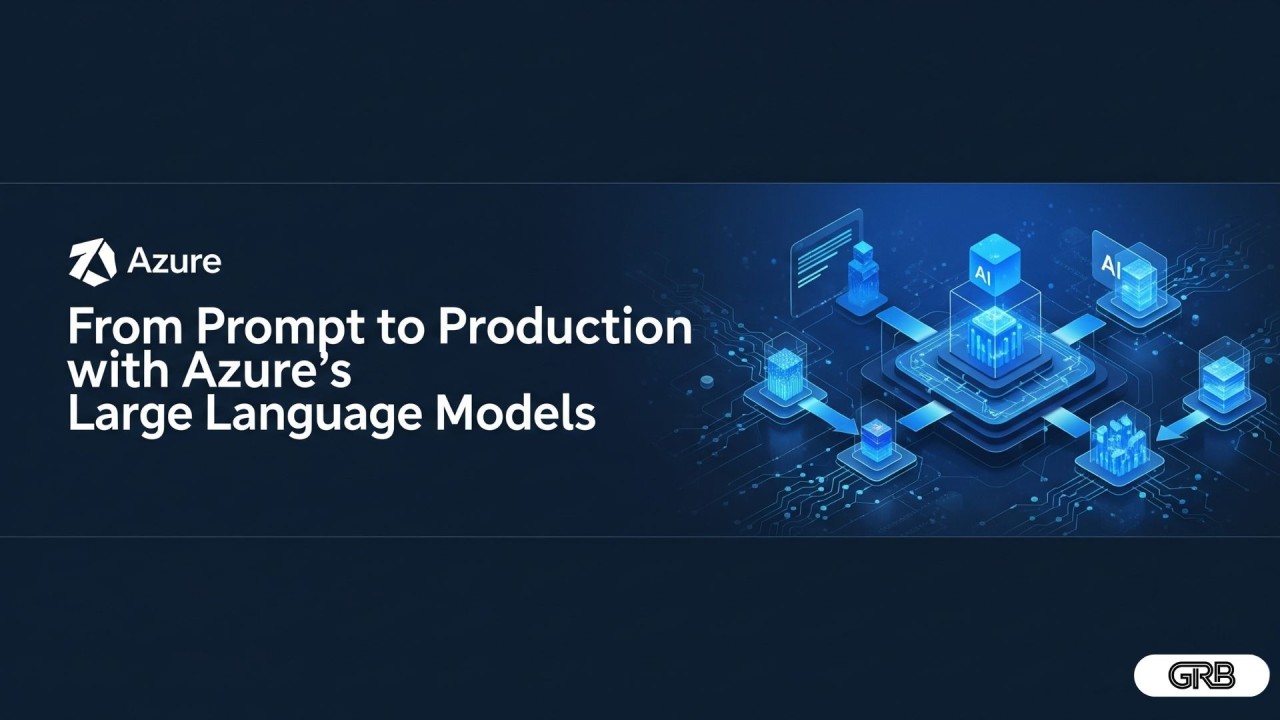The journey involves far more than just prompt engineering; it requires a robust, secure, and scalable architecture. With Microsoft Azure, we have a comprehensive toolkit to build these solutions end-to-end.
Here’s a technical breakdown of the key stages and services involved:
## 1. Development & Orchestration: Azure AI Studio and Prompt Flow
The process begins in Azure AI Studio, the central hub for AI development. We use Prompt Flow to visually design, build, and evaluate our LLM workflows. This powerful tool allows us to:
- Create Executable Graphs: Chain together prompts, Python tools, and API calls into a single, cohesive flow.
- Iterate and Evaluate: Run batch tests against large datasets and assess the performance of our flow using built-in or custom evaluation metrics like groundedness, coherence, and relevance.
- Version Control: Integrate directly with Git for source-controlled, collaborative development.
## 2. Data Grounding: Retrieval-Augmented Generation (RAG) with Azure AI Search
To make LLMs truly valuable for the enterprise, they must be grounded in proprietary, up-to-date data. We implement the Retrieval-Augmented Generation (RAG) pattern using Azure AI Search.
This involves creating an index of our private data (e.g., documents, manuals, knowledge bases) and leveraging its hybrid retrieval capabilities. By combining semantic vector search with traditional full-text search (like the Okapi BM25 algorithm), we can fetch the most relevant context for the LLM to use, significantly reducing hallucinations and enabling verifiable, cited responses.
## 3. Deployment & Scaling: Managed Online Endpoints
Once our Prompt Flow is refined, we deploy it as a Managed Online Endpoint. This provides a scalable and secure REST API for real-time inference. Azure offers flexible compute options for hosting:
- Azure App Service & Azure Functions: Ideal for rapid, serverless deployments where auto-scaling and ease of management are priorities.
- Azure Kubernetes Service (AKS): For maximum control over the environment, handling complex microservice-based applications, and managing custom container dependencies.
## 4. Governance & Security: Azure API Management (APIM)
Exposing a model endpoint directly is a security risk. We place Azure API Management (APIM) as a facade in front of our LLM application. APIM serves as a critical governance and security layer, enabling us to:
- Secure Endpoints: Implement robust authentication and authorization policies (e.g., OAuth 2.0, API Keys).
- Control Consumption: Enforce rate limits and quotas to prevent abuse and manage costs.
- Enhance Performance: Cache responses for common queries, reducing latency and backend load.
- Monitor & Observe: Gain deep insights into API usage, performance, and errors through integration with Azure Monitor.
This complete architecture transforms a Large Language Model from an experimental concept into a reliable, governed, and scalable enterprise asset.
What are the biggest challenges you face when productionizing your LLM applications?

